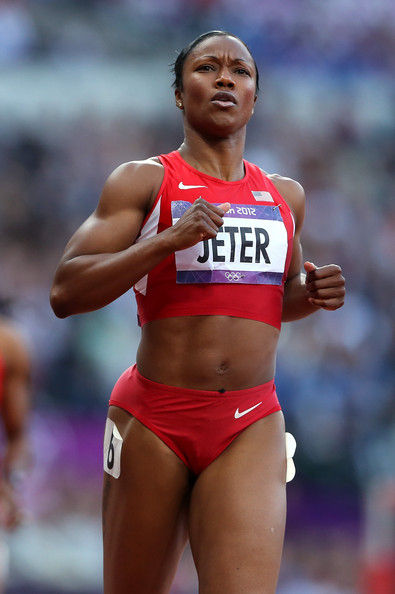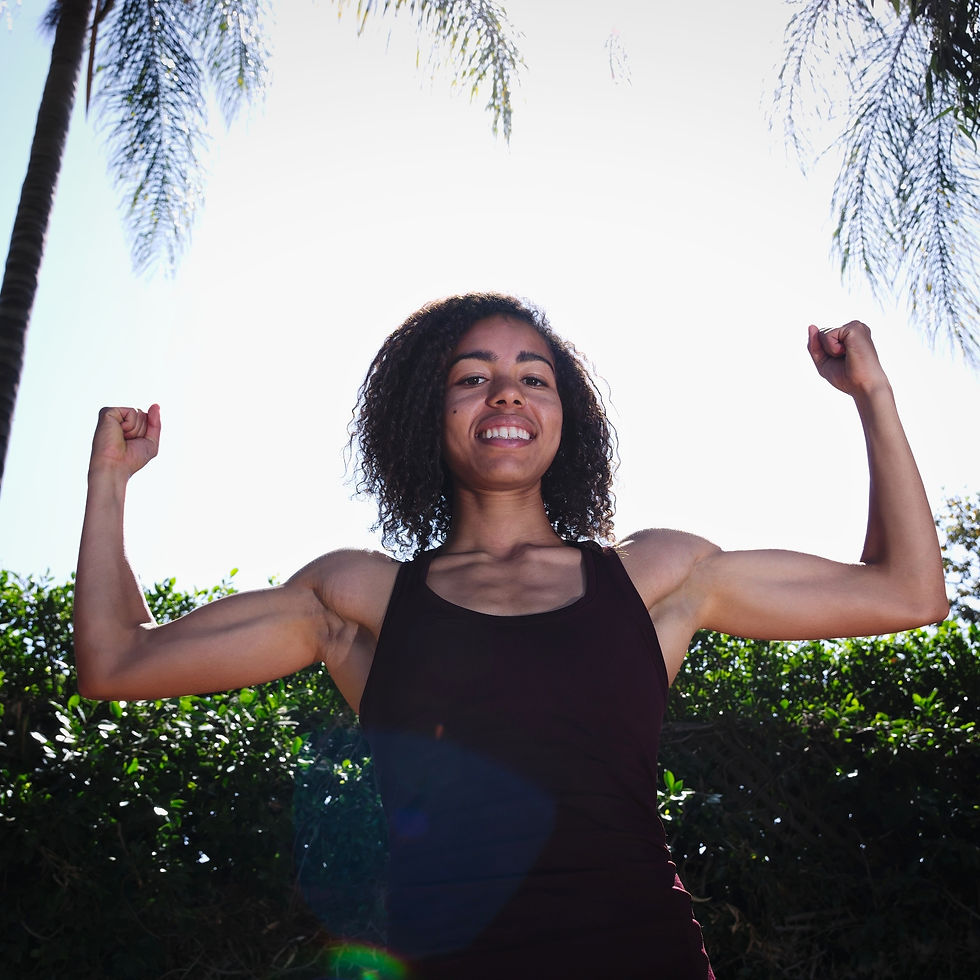Buff, fit and feminine - breaking gender role boundaries in fitness
- vainayaki

- Jun 27, 2015
- 3 min read
There is something I have come across repeatedly and can't ignore anymore: the negative stigma around women showing athleticism and "buffness" in their appearance.
There seems to be a commonly believed idea by men and women alike that "having muscles" is "manly", not feminine, unnatural, and is often associated with accusations of steroid use in women who show some strength and size in their limbs.
I came across this post on social media by a fellow woman who gave me the final push to write this post:
"Dear women, most of you are starting to look like buff men with your muscles..tone it down a bit..and remember you are a lady..but who am I to say anything..maybe you want to be a man"
...followed by comments of agreement.
*unfriend*
How sad. Now, of course there are some women out there that use anabolic steroids and substances to enhance their musculature or performance. They can give competitive sports, or just being muscular, a bad rep. This type of thing can sometimes be blatantly obvious in appearance, but not to those of us conditioned to think that any athleticism and defined musculature in a woman is "manly" and "unnatural", even when obtained through exercise and good diet.
I do want to point out that men overall are susceptible to a larger amount of muscle hypertrophy with the right type of exercise and weight lifting, than women are. This is due to the physiological and hormonal differences between the sexes. However, genetics affecting individual natural body type are a factor too, and in some people may even override gender difference.
These toxic and oppressive ideas that women shouldn't cross the line beyond an acceptable "toned" build is most pervasive in the non-athlete population, but is ironically pretty popular in fitness modeling as well.

Some very typical images associated with the term female fitness model are women with extremely low body fat wearing undergarments to show off large implant breasts or fannies perked out in a way that screams chronic back problems, not fitness.
As the line between sex appeal and athletic appeal seems to diminish in this way, women and men alike are buying into unhealthy and scientifically- unsound perceptions of what fitness is allowed to be for women; perceptions that are careful not to spoil society's apparently oppressive parameters of what proper womanhood is in regard to fitness and physical appearance.
And the issue on how female fitness modeling has become totally sexualized, arguably at the expense of true athleticism or health, can be a separate post for another day.
Many women avoid activities like lifting weights in fear that they will "bulk up". This is not true, unless you train specifically for that. (Feel free to contact me for more info on how to better train for your aims.) Resistance training has a plethora of benefits, some of which are especially important for women.
Here are just a few:
1. Maintained bone density and decreased osteoporosis risk. Osteoporosis and bone demineralization have a higher occurence in women than men, especially post-menopausal women. Studies have shown that beginning regular resistance training before old age significantly helps to maintain bone density, and facilitate joint health to lower risk of osteoarthritis when done correctly with proper technique and form.
2. Better results in losing body fat for those seeking weight loss. Regular resistance training results in a higher resting metabolism, which means more fat burning all day every day as a reward for putting in regular work a few days/week.
3. Reduced risk of metabolic problems resulting in heart disease and diabetes.
4. Self defense - having some strength and size doesn't hurt if it becomes necessary to fight off modern-day predators either.
So can we please put this old-fashioned ignorance, and arguably sexism, to rest? We don't need to perpetuate this modern day equivalent of the old belief that girls shouldn't do sports or be too athletic because it's not ladylike. A number of sports and activities require or result in muscle hypertrophy, or "buffness", to perform well.
Carmelita Jeter, the Olympic sprinter below, is a perfect example of using strength and bulk to elicit power on the track. I have shared the track with her in training and multiple competitions, and can assure you that her grace on the track has much to do with her muscular strength and the neuromuscular benefits of resistance training.

And sport aside, why can't it be attractive for a lady to have some physical attributes that show strength? Let's not let the intimidation and insecurity of a few lead to oppression and rejection of the healthy lifestyle of many.












Comments